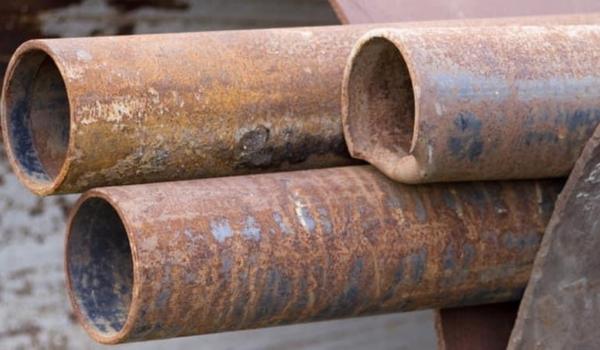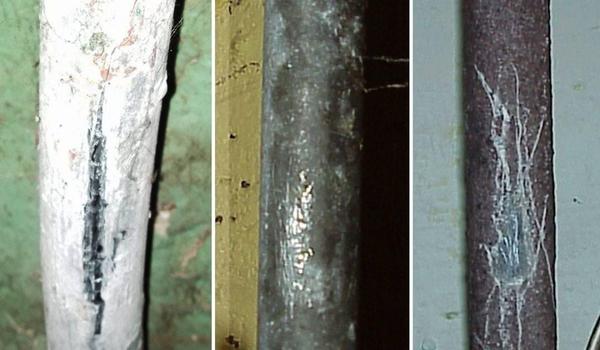You can’t taste lead. You can’t smell it. And for thousands of families in places like Flint, Michigan — they didn’t even know it was in their water until it was too late.
Lead exposure through drinking water is still a risk in many U.S. homes, especially those with older pipes. But the right filter can make all the difference.
So… does reverse osmosis actually remove lead? (Short answer: yes — and here’s why.)
✅ Quick Takeaways
- Reverse osmosis (RO) systems can remove up to 99% of lead
- The RO membrane filters out heavy metals by forcing water through microscopic pores
- Most RO units also include carbon prefilters, boosting contaminant reduction
- It’s one of the most effective filtration methods for reducing lead in tap water
- Especially useful if your home has older plumbing or lead fixtures
🏚️ How Does Lead Get into Tap Water?

Lead contamination usually doesn’t start at the water treatment plant — it happens on the way to your faucet.
The biggest culprit? Old plumbing. For decades, lead pipes and solder were used in homes and service lines because the metal was durable and easy to work with. But over time, corrosion allows lead to leach into your drinking water — especially in homes built before 1986.
Other sources include:
- Aging brass faucets and fixtures
- Leaded solder in copper piping
- Low pH or high acidity in water speeding up corrosion
More than 9 million homes in the U.S. are still connected to lead service lines. And if you’re unsure whether you’re at risk, look for these common signs of lead in tap water — or better yet, get your water tested.
⚠️ Why Is It So Dangerous

Lead isn’t just another contaminant — it’s a potent neurotoxin, especially harmful to young children and pregnant women. Keep in mind that — even small amounts in water can cause serious, long-term health problems.
🧠 For kids, lead exposure has been linked to:
- Developmental delays
- Behavioral and learning issues
- Lower IQ and attention problems
👩⚕️ In adults, it can contribute to:
- Fatigue, muscle pain, and mood changes
- High blood pressure and fertility issues
- Miscarriage or premature birth
And the scariest part? Lead builds up over time. According to the CDC, no level of lead is considered safe in children’s blood — and symptoms often don’t show up until damage is already done.ional filtration is up to you.
💧 How Effective is RO

Reverse osmosis works by pushing water through a semi-permeable membrane with pores so tiny that most contaminants — including lead — can’t get through.
In most systems, water first passes through a carbon prefilter to catch chlorine and sediment. Then it’s forced through the RO membrane, leaving heavy metals, nitrates, and other toxins behind. What’s left is clean, filtered water collected in a storage tank.
💡 How effective is it? Reverse osmosis systems have been shown to reduce lead levels by as much as 99%, depending on the setup. For families dealing with older pipes or uncertain water quality, it’s one of the most reliable at-home options for cutting exposure.
Bonus: reverse osmosis also removes many bacteria and pathogens larger than the membrane’s pore size — so it’s a great choice if you’re also concerned about microbial contamination.
🧪 What Else Does It Remove?
Lead isn’t the only thing lurking in your tap. Most RO systems pair a carbon prefilter with a high-efficiency membrane — giving you a powerful combo that removes far more than just metals.
Here’s a look at what a good RO setup can tackle:
| 🧼 Contaminant Type | 🧯 Common Examples |
|---|---|
| Disinfectants | Chlorine, Chloramines |
| Heavy Metals | Lead, Arsenic, Chromium, Copper |
| Organic Compounds | Pesticides, Herbicides, VOCs |
| Microorganisms | Giardia, Cryptosporidium (larger bacteria) |
| Emerging Contaminants | PFAS, microplastics, trace pharmaceuticals |
And while RO membranes don’t remove everything on their own, the pre- and post-filters do a lot of heavy lifting — especially for chemical contaminants like lead and PFAS.
🏠 RO vs. Whole-House Filters

So which is better for removing lead — a whole-house filter or a reverse osmosis system?
Here’s the catch: whole-house systems treat water before it enters your home’s plumbing. But if your pipes or fixtures contain lead, contamination can happen after the water leaves the filter.
That’s where RO shines — it filters water right before you drink it, removing the lead that may have leached in from inside your home.
💡 If your setup includes well water or has low household pressure, some RO units may need a booster pump to work efficiently — but the payoff is clean, lead-reduced water straight from the tap.
RO systems are best for:
Situations where lead is entering after the main supply liner pipes. Human skin absorbs little lead, but you can add a KDF shower head filter to purify your bathing water.
- Drinking and cooking water
- Homes with older plumbing
🔍 Pros and Cons

Reverse osmosis filters are incredibly effective — but they’re not perfect for every home. Let’s break down the benefits and trade-offs so you know what to expect.
| ✅ Pros | ⚠️ Cons |
|---|---|
| Removes lead, heavy metals, & many other contaminants | Wastes 2–3x more water than it produces |
| Compact and easy to install under a sink | Only provides filtered water at one tap |
| Improves taste by removing chlorine & impurities | Removes healthy minerals (may taste “flat”) |
| Works great in apartments or rentals | May require a pump in low-pressure homes |
| Filter replacements are easy and widely available | Upfront system cost is higher than standard filters |
Still, if your main concern is waterborne toxins, RO systems consistently outperform standard filters — especially when paired with activated carbon.
🧪 How To Test Your Water

Lead is tricky — it’s invisible, odorless, and tasteless. So unless you test your water, you’ll never know it’s there.
🧾 If you’re on city water, your local utility is required to test — but they typically only check a sample of homes, not yours specifically. And if you’re on a private well, testing is entirely up to you.
For peace of mind, we recommend using a certified lab like SimpleLab. It’s fast, accurate, and gives you a detailed breakdown of contaminants — including whether lead is present and how much.
Other Ways to Reduce Exposure
A water filter is the best long-term solution for lead. But if testing shows high levels, you need to take immediate action by:
- Switching to bottled or distilled water.
- Using only cold water. Warm water coaxes lead from pipes.
- Clean faucet aerators weekly to remove solid pieces of lead.
- Letting water run for two full minutes before drinking it to flush out loose particles.
Boiling water does not remove lead because its boiling point is higher than water.
🧠 Final Thoughts
Lead in water is no small issue — and with aging pipes still in use across the U.S., it’s not going away anytime soon.
The good news? Hands down, reverse osmosis is one of the most effective ways to get clean tap water. It filters lead right at the tap and gives you peace of mind with every glass.
Clean water doesn’t have to be complicated — just smart.
 122 people found this helpful. Was this guide helpful to you?
122 people found this helpful. Was this guide helpful to you? 

